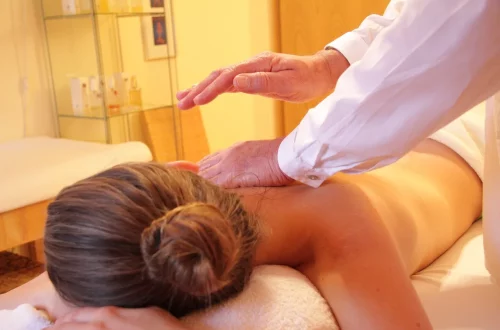
Understanding the Difference Between a Cyst and a Zit
Understanding the different types of skin blemishes is crucial for anyone concerned about their dermatological health. Among the myriad of skin issues that people may encounter, cysts and zits are two of the most commonly discussed. Both can cause discomfort and affect one’s self-esteem, yet they arise from different causes and have distinct characteristics.
Cysts are generally benign, fluid-filled sacs that can develop anywhere on the body. They often form due to blocked sebaceous glands, infections, or other underlying issues. Zits, on the other hand, are a form of acne that typically arises from clogged pores, often due to excess oil and dead skin cells. Understanding these differences not only aids in effective treatment but also helps in identifying when to seek professional medical advice.
This article delves into the key distinctions between cysts and zits, aiming to equip readers with the knowledge they need to better understand their skin conditions.
What Are Cysts?
Cysts are abnormal, closed sacs within body tissues that can contain air, fluid, or semi-solid material. They can develop in various parts of the body, including the skin, organs, and bones. When it comes to skin cysts, they are often found on the face, neck, and torso. Sebaceous cysts, also known as epidermoid cysts, are among the most common types of cysts found on the skin.
The formation of cysts can occur due to several reasons. One of the most prevalent causes is the blockage of sebaceous glands, which are responsible for producing oil that lubricates the skin. When these glands become obstructed, the oil accumulates, forming a cyst. Additionally, cysts can develop as a result of infections, genetic conditions, or chronic inflammatory conditions.
Cysts are generally painless and may not require treatment unless they become infected or cause discomfort. In such cases, medical intervention may be necessary. Treatment options can include drainage, surgical removal, or injection of medication to reduce inflammation. It’s important to consult a healthcare professional for an accurate diagnosis and appropriate management of cysts.
While most cysts are benign, some may warrant further investigation, especially if they grow rapidly or change in appearance. Regular monitoring and maintaining skin hygiene can help prevent the formation of new cysts.
The Nature of Zits
Zits, commonly referred to as pimples or acne, are a type of inflammatory skin condition. They arise when hair follicles become clogged with excess oil, dead skin cells, and bacteria. This blockage leads to the formation of a pimple, which can vary in size and severity. Zits typically occur on the face, back, shoulders, and chest, where sebaceous glands are most active.
The development of zits is often linked to hormonal changes, particularly during puberty, menstruation, or pregnancy. These hormonal fluctuations can increase oil production, contributing to clogged pores. Additionally, factors such as stress, diet, and skincare products can influence the occurrence of zits.
Unlike cysts, zits can be painful and may be accompanied by redness and swelling. They can take various forms, including whiteheads, blackheads, and cystic acne. The presence of zits can significantly impact a person’s self-esteem, leading many to seek treatment options.
Treatment for zits can vary based on severity. Over-the-counter topical treatments containing ingredients like benzoyl peroxide or salicylic acid can be effective for mild to moderate acne. In more severe cases, prescription medications or dermatological procedures may be necessary. Maintaining a consistent skincare routine and avoiding known triggers can also help manage and prevent zits.
Key Differences Between Cysts and Zits
While both cysts and zits can be bothersome skin conditions, they exhibit several key differences. Understanding these distinctions is essential for effective treatment and management.
Firstly, the formation process of each is different. Cysts develop as a result of blocked glands or infections, while zits form from clogged hair follicles due to excess oil and dead skin cells. This fundamental difference in origin affects their appearance and treatment options.
Secondly, cysts are typically painless and may not cause any noticeable symptoms unless they become infected. In contrast, zits can be painful, inflamed, and often associated with irritation and redness. The presence of inflammation makes zits more noticeable and distressing for those affected.
Another difference lies in their treatment approaches. Cysts may require surgical intervention or drainage if they become problematic, whereas many zits can be managed with topical treatments and lifestyle changes. Understanding this difference can help individuals seek the right treatment for their specific condition.
Finally, the potential for complications varies. While most cysts are benign, some can become infected or lead to complications, necessitating medical attention. Zits, particularly severe forms of acne, can lead to scarring if not treated properly. Therefore, recognizing whether a skin issue is a cyst or a zit is crucial for preventing long-term consequences.
When to Seek Medical Advice
Knowing when to consult a healthcare professional is vital for anyone dealing with skin concerns. While many cysts and zits can be managed at home, certain symptoms may indicate the need for medical intervention.
For cysts, individuals should seek medical advice if the cyst becomes painful, swollen, or shows signs of infection, such as redness or discharge. Rapid growth or changes in color can also be warning signs that warrant further evaluation. A healthcare professional can provide an accurate diagnosis and recommend appropriate treatment options.
When it comes to zits, persistent or severe acne should not be ignored. If over-the-counter treatments are ineffective after several weeks, it may be time to consult a dermatologist. Additionally, individuals who experience significant emotional distress due to their acne should seek support, as mental health is closely tied to dermatological conditions.
In conclusion, understanding the difference between cysts and zits can empower individuals to take charge of their skin health. Awareness of symptoms and treatment options is crucial for effective management.
*Disclaimer: This article is not intended as medical advice. For any health concerns, please consult a qualified healthcare professional.*




